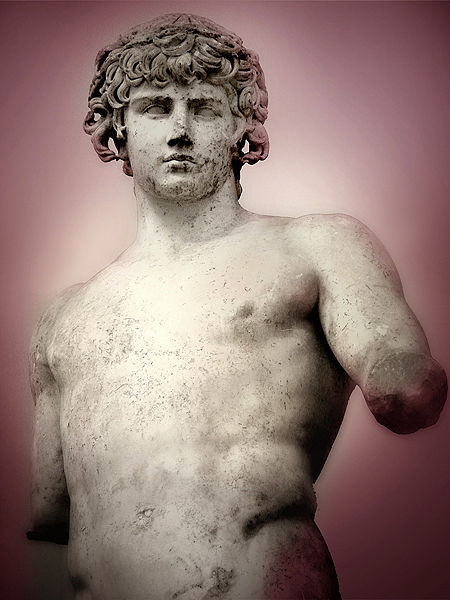In 1894, a remarkable archaeological discovery took place at Delphi, Greece—the unearthing of the Statue of Antinous. This exquisite statue honors Antinous, the young and beloved companion of the Roman Emperor Hadrian. Known for its striking idealization of youth and beauty, the statue highlights not only the Roman admiration for Antinous but also the influence of Greek artistic traditions on Roman sculpture.

A Symbol of Devotion and Beauty
Antinous’s untimely death in 130 AD led to his deification by Hadrian, cementing his place as a symbol of divine love and eternal youth. In the years following his death, statues of Antinous were erected across the Roman Empire, portraying him as a god. The Delphi statue stands out as one of the most renowned examples of this artistic tradition, exuding grace and serenity in its lifelike features and elegant form.

The Fusion of Greek and Roman Art
The statue exemplifies the fusion of Greek and Roman culture. While the Romans were skilled in portraiture and realism, they often turned to Greek art for inspiration when depicting idealized figures. The statue of Antinous at Delphi embodies this blend, with its meticulous attention to physical perfection—traits deeply valued by both Greek and Roman societies. This fusion symbolizes the broader cultural exchange between the two civilizations, with Greek aesthetics profoundly shaping Roman artistic expression.

The Legacy of Antinous and Hadrian
The statue of Antinous remains a powerful symbol of the unique bond between Hadrian and his young companion, transcending both time and culture. Today, the sculpture is housed in the Delphi Archaeological Museum, where it continues to captivate visitors with its timeless beauty. As a key piece of both Greek and Roman history, the statue of Antinous not only immortalizes a personal connection but also stands as a testament to the enduring legacy of both empires.
In the rediscovery of this masterpiece, the world was reminded of the deep emotional and cultural ties that defined the ancient world, encapsulating in stone the idealized vision of youth, love, and beauty.

